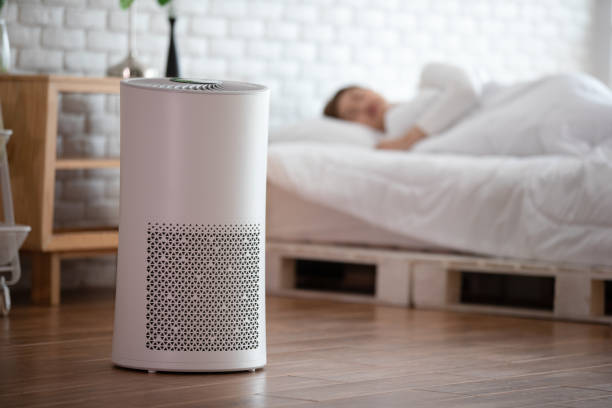Most of us think that air quality is only affected by the outside world with car smog and industrial toxins.
However, we spend 90 percent of our daily lives indoors, which makes indoor air quality one of the most crucial factors in maintaining our health and well-being.
Several sources make up poor air quality, and volatile organic compounds are one of them.
Volatile Organic Compounds – What are they?
Organic compounds are gas emissions from certain solids or liquids. As per the U.S Environmental Protection Agency (EPA), many VOCs are used in the manufacturing of paints, refrigerants, and pharmaceuticals.
While some volatile organic compounds are harmless, a few have concentrations ten times higher than those found outdoors. Examples of these harmful VOCs include paints, pesticides, printers, glues, adhesives, and permanent markers.
Even regular household products, such as varnishes, disinfectants, cosmetics, and cleaners, release VOCs into the environment.
Research studies conducted by the EPA’s Total Exposure Assessment Methodology have found that people who use organic compounds expose themselves to toxic pollutants, and these concentrations can remain in the air for hours after the activity is done. If the level of VOCs is less than 0.3 mg/m3, the level of concern is low.
However, if it exceeds 1 mg/m3, the level of concern is high, and immediate steps should be taken to prevent consequences.
Some industrial-grade air purifiers by Euromate Pure Air.
VOC Sources
Indoor:
Household Products:
- Furniture
- Deodorants
- Air Fresheners
- Pesticides
- Cosmetics
- Gasoline
- Automotive Products
- Insect Repellents
Building Material:
- Sealants
- Adhesives
- Carpet
- Flooring
- Wood Preservatives
- Chemical Solvents
Outdoor Sources:
- Wood Burning
- Extraction of Oil and Gas
- Industrial toxins
- Diesel emissions
- Automobile Emissions
Effects of VOCs on Human Health
The effects of VOCs on human health depend on several factors, such as their composition, concentration, and duration of exposure. Generally, the health effects of VOCs on humans include eye, nose, and throat irritation, as well as nausea, fatigue, and headaches.
However, they are also known to cause liver, lung, and kidney damage. A research study on the respiratory effects of VOCs found that people exposed to volatile organic compounds experience neurocognitive complications, upper and lower respiratory difficulties, and an increased risk of asthma.
Check out Euromate Pure Air’s medical air purifier here.
Reducing Exposure to VOCs
You can take several precautionary steps to reduce human exposure to VOCs, such as:
- Opening doors and windows in good weather conditions (not always optional)
- Installing mechanical air filtration technology to eliminate VOCs and maintain a healthy indoor air quality level
- Avoiding storage of opened paint containers in the building
- Using household items as per the company’s instructions
- Using integrated pest management to avoid pesticides
- Using maximum fresh air while painting to reduce exposure to benzene
Euromate Pure Air offers a range of air purifiers that can safely eliminate volatile organic compounds and other toxic pollutants from the environment.
Learn about Euromate’s commercial air purifiers here https://euromatepureair.com/commercial-air-purifiers/
All of our air purifiers are equipped with certified, cutting-edge technology, ensuring that your indoor air is fresh and healthy.


